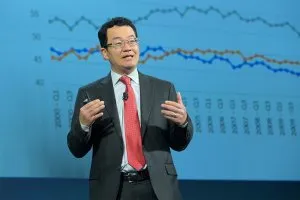Commercial sales transactions span the price spectrum, but tend to be measured and reported based on size. Commercial real estate (CRE) deals at the higher end—$2.5 million and above—comprise a large share of investment sales. Smaller commercial transactions tend to be obscured given their size. However, these smaller properties provide the types of commercial space where average Americans engage on a daily basis.
The National Association of REALTORS® Commercial Real Estate Outlook report focuses on market performance in both large (LCRE) and small commercial (SCRE) sectors. The report provides an overview of economic indicators, investment sales and leasing fundamentals.

The U.S. economy maintained a solid pace in the third quarter of this year, with positive consumer spending, improved business investments and gains in export activity. Employment continued rising during the third quarter, with a gain of 364,000 net new jobs. Over the January through October period, there were 1.7 million net new payroll positions, with 1.6million in the private sector. Average weekly earnings of employees rose by 2.8 percent in the third quarter of this year, compared to one year earlier. The unemployment rate declined to 4.3 percent in the third quarter of 2016, down from 4.9 percent a year ago.
Investment Sales
Investment volume in LCRE markets continued into the third quarter of this year. The volume of commercial sales in LCRE markets totaled $114.2 billion, a nine percent year-over-year decline, according to Real Capital Analytics (RCA). The decline curve masked mixed performance across and within the property types. While office sales were down 18 percent on a yearly basis—mostly due to a drop in CBD office transactions—suburban office sales rose. Meanwhile, the industrial sector posted strong sales volume, exceeding the prior peak set in the third quarter of 2007. However, the gains were outpaced by the 32 percent drop in retail sales during the third quarter.
Glancing at the broad landscape, markets seem much more nuanced this year. Portfolio sales increased three percent in the third quarter of this year, while single asset sales declined 13 percent. The trend of diverging markets continued, with sales in the six major metros tracked by RCA posting a 12 percent decline year-over-year. In comparison, sales in LCRE secondary markets declined only six percent, while volume in tertiary markets dropped 14 percent.
Commercial real estate in SCRE markets continued to experience advances in investment sales, however the momentum moderated during the third quarter of 2017. Following on the first quarter’s 4.4 percent decline and the second quarter’s 4.4 percent increase in sales volume, REALTORS® reported sales volume rose 3.6 percent in the third quarter.

Investment Prices
Highlighting the nuanced environment, prices in LCRE markets advanced 7.5 percent in the third quarter, according to RCA. The increase was driven by strong appreciation in prices of apartment and industrial properties, which advanced 10.0 percent and 8.2 percent, respectively. Prices for retail properties were virtually flat, with a slight 0.8 percent year-over-year increase. Office property prices rose 5.1 percent during the quarter, as both CBD and suburban properties experienced appreciation.
Capitalization rates in LCRE markets continued on a slight downward trend, moving from 6.9 percent in the second quarter to 6.8 percent in the third, based on RCA data. On a yearly basis, cap rates were flat, as the 20 basis-point compression experienced by apartment properties was balanced by an equal cap rate increase for office and hotel properties.

In small cap markets, investors remained active, seeking higher yields. The shortage of available inventory—a defining market feature during this cycle—remained the number one concern for REALTORS® engaged in commercial investments.
Prices for SCRE properties advanced, posting a 3.9 percent yearly advance in the third quarter of this year. The price trend mirrored broader markets, displaying a moderation in momentum. The pricing gap between sellers and buyers remained the second highest ranked concern. Capitalization rates in SCRE markets declined from the first two quarters of this year, to an average 7.2 percent across all property types. However, on a yearly basis, cap rates were flat.

Outlook
Commercial leasing fundamentals are expected to continue on a positive trend, benefiting from the tail winds of an expanding economy. Tax reform discussions have been favorable toward commercial investments, although questions remain about various aspects of the Senate and House proposals.

With the Federal Reserve’s commitment to unwinding its easing measures, in addition to a likely rate increase in December of this year, interest rates are expected to move upward in 2018. For commercial investments, there are downward pressures expected on cap rates going forward, although the impact is likely to be unevenly distributed across geography, sectors and property class. In SCRE markets, increased scrutiny from banking regulators has tightened lending conditions, a trend which will close out 2017.









